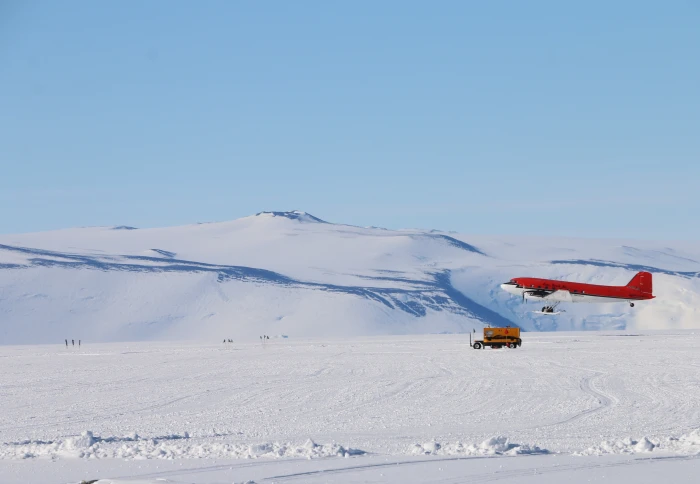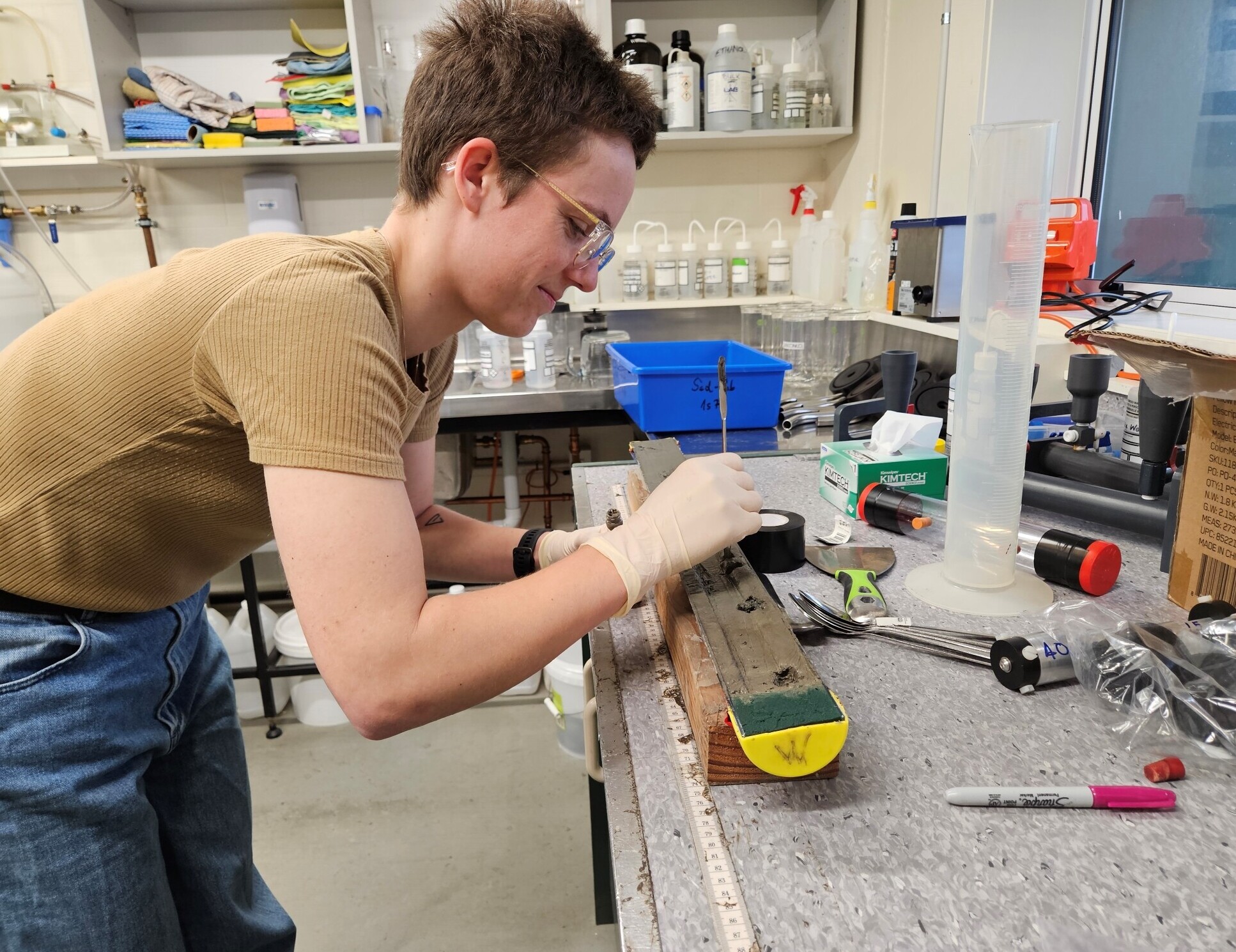SWAIS2C core workshop offers first glimpse of sediment from below Ross Ice Shelf


Sediment cores retrieved from Antarctica’s Siple Coast by an international team co-led by Imperial College London were opened at a recent workshop.
The workshop at the Otago Repository for Core Analysis (ORCA) is an important step in the hunt for clues about the past behaviour of the West Antarctic Ice Sheet.
The ten sediment cores obtained and examined by the SWAIS2C (Sensitivity of the Western Antarctic Ice Sheet to Two Degrees Celsius of Warming) team were collected in December 2023. With only a handful of cores previously collected from under the Ross Ice Shelf, an area the size of France, these new cores are an extremely rare geological record.
Co-led by Professor Tina van de Flierdt, Head of the Department of Earth Science and Engineering at Imperial, the international SWAIS 2C project will use these geological records to better understand how sensitive the Ross Ice Shelf and West Antarctic Ice Sheet are to past warming similar to the 1.5 to 2°C (2.7° to 3.5°F) target set in the Paris Agreement.
Cores travelled over 5000 km
First, the sediment cores were hoisted up through 55 m of ocean cavity and 580 m of ice. They then travelled by air 860 km to Scott Base then 4000 km to Christchurch (New Zealand), finishing with a 350 km car ride to Otago University’s ORCA facility in Dunedin.
“These samples offer a huge increase in the amount of material we have to help us understand the present-day environment beneath the ice shelf, and the history those sediments represent,” says SWAIS2C Co-chief scientist Richard Levy, from GNS Science and Te Herenga Waka – Victoria University of Wellington.
This initial workshop was focused on using largely non-destructive analysis techniques to learn more about the cores, so that the wider research team can plan their research and put in sampling requests.


To begin unlocking the sediment’s secrets, the cores were X-rayed and CT-scanned. They then had to be split in half longitudinally, a painstaking process that initially uses a small circular saw to score the sides, and then requires manual splitting with a thin wire.
“Antarctic sediment often has large clasts in it. If you pull the wire through too quickly, or cut through with the saw, there’s a risk of dragging a rock with you all the way through the core and ruining it,” says Linda Balfoort, SWAIS2C sedimentologist and PhD student with Te Herenga Waka – Victoria University of Wellington and GNS Science.
Following successful splitting, visual description began. The team looked for changes in sediment colour and grain size, and calcareous materials and signs of fossilised marine algae, creating a visual core log. They also took smear slides – tiny samples of sediment placed on microscope slides, and some bigger samples to use for dating analysis.
“Antarctic sediments are notoriously hard to date. We’re particularly looking out for fossilised foraminifera (single-cell organisms with a calcium carbonate shell), as they’re very useful for pinpointing dates and revealing information about ocean chemistry,” says Balfoort.
The split cores were scanned to a high resolution, and a range of other non-destructive measurement techniques were used such as XRF to identify the chemical elements present.
“Any new record from this area is incredibly important and valuable, so I felt very privileged to be among the first people to see these sediments. But to me the most exciting thing will be to get the data, analyse the smear slides, and find out what’s hiding inside the sediments,” says Balfoort.
‘The longest core ever retrieved from the Siple Coast’
SWAIS2C Co-chief scientist Tina van de Flierdt, from Imperial, says that without the dating results and further analysis it’s too soon to know conclusively how far back in time the sediment in this core reaches, but there are positive signs that it holds information about how the Ross Ice Shelf retreated in the past.
“We’re confident that what we are seeing is a glacial retreat sequence, when the grounding line – the point where the floating Ross Ice Shelf meets the Western Antarctic Ice Sheet that is grounded on bedrock – moved further inland. We’re not sure yet whether it’s the long retreat following the last glacial maximum, or a much more recent process within the past 200 years or so,” says van de Flierdt.
Next steps
The team of drillers, engineers and researchers will be heading back to the Siple Coast site for the 2024/25 Antarctic field season, to drill up to 200 m below the seafloor to recover a geological record going even further back in time than these shorter cores, to provide key insights into West Antarctica’s potential contribution to future sea-level rise.
Article text (excluding photos or graphics) © Imperial College London.
Photos and graphics subject to third party copyright used with permission or © Imperial College London.